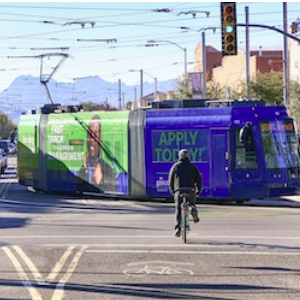 This body of work represents the culmination of nearly a decade of research into the economic effects of transit: looking at 17 light rail transit (LRT), 14 bus rapid transit (BRT), 9 streetcar transit (SCT), and 12 commuter rail transit (CRT) systems in 35 metro areas across the United States. A surprising finding from this analysis was that transit systems vary substantially in their attractiveness to jobs with respect to place typology. A second surprising finding: while one might assume that higher wage jobs would be more attracted to transit stations than middle or lower wage jobs, this is not necessarily the case. Analysis revealed important contextual differences for each transit mode with regards to workers' wage group and distance.
This body of work represents the culmination of nearly a decade of research into the economic effects of transit: looking at 17 light rail transit (LRT), 14 bus rapid transit (BRT), 9 streetcar transit (SCT), and 12 commuter rail transit (CRT) systems in 35 metro areas across the United States. A surprising finding from this analysis was that transit systems vary substantially in their attractiveness to jobs with respect to place typology. A second surprising finding: while one might assume that higher wage jobs would be more attracted to transit stations than middle or lower wage jobs, this is not necessarily the case. Analysis revealed important contextual differences for each transit mode with regards to workers' wage group and distance.
The researchers developed a "Employment-Worker Balance (EWB)" metric. A more accessible workplace translates to a more productive and resilient workforce. Low EWB scores near transit stations reveal low-hanging fruit for planners who wish to increase economic and housing resiliency.
Learn more about Transit Impacts on Jobs, People and Real Estate led by Arthur Chris Nelson of University of Utah.



